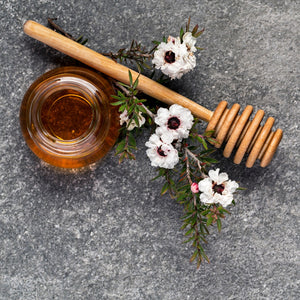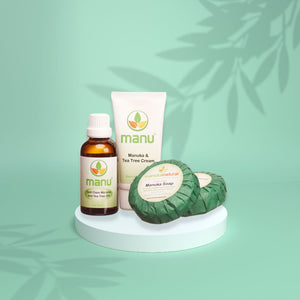
How to Identify Genuine Manuka honey.
The high prices being achieved for genuine Manuka honey has led to many reports of honey fraudulently labelled as Manuka honey.
New Zealand is the sole producer of Manuka honey and produces approximately 1400 tonnes of honey annually.
However it is reported that over 10,000 tonnes of honey labelled as New Zealand Manuka is sold annually in UK alone, One can only guess at the amounts sold in North America and Asia.
Australia does NOT produce Manuka honey.
Unscrupulous traders often buy a small quantity of genuine or blended honey from New Zealand and mix it with cheaper honey or even sugar syrup to cash in on the high prices achieved by the genuine product.
So how can the real product be identified?
For the layman it is impossible, without having an atomic spectrometer at hand and most people don’t have one of these expensive laboratory instruments. Therefore we rely on the independent certification by a trusted laboratory, labelling, country of manufacture and production of the finished product.
Because genuine Manuka honey has more than 200 signature compounds you have to rely on trusted certification, brands and suppliers.
When it comes to testing, of the 200 compounds present in Manuka honey there are 3 prominent ones that identify Manuka honey as genuine and unadulterated.
The signature compounds are Leptosperin (LS), Dihydroxyacetone (DHA) and Methylglyoxal (MG or MGO)
These compounds must be present in Manuka honey in recognised minimum concentrations for the honey to pass the laboratory testing.
Once a batch of honey has passed the test it will also be graded according to the concentration of Methylglyoxal for it to qualify for a UMF (Unique Manuka Factor) certification.
The amount of Methylglyoxal in the honey is directly proportional to the UMF certification. For example a test result of 515 mg of MGO per kg of honey will qualify for a UMF certification of 15+
Therefore our best advice on buying genuine certified Manuka honey is to:
- Purchase only honey with the UMF trademark
- Purchase only from a New Zealand based on-line store
The penalties for fraudulent misrepresentation of Manuka honey in New Zealand are very high so you are very much less likely to be offered adulterated honey in New Zealand than any other country in the world.
Here is an example of high quality certified UMF honey available from our website: https://www.manukanatural.com/manuka-honey-umf/



Leave a comment